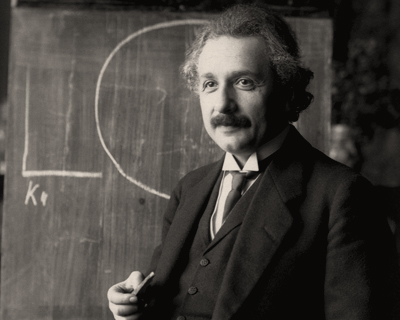

Saulson says, “Of my many fond memories of Josh, one that stands out is of the joy he took in LIGO's discovery of gravitational waves, for which he helped to lay the groundwork decades before.” That monumental discovery in 2015 finally confirmed Einstein’s theory of general relativity.

Researchers at LIGO, including A&S physicists, made the first-ever detection of gravitational waves, produced by the merging of two black holes. “Josh’s work was in relativity theory, but he always took an active interest in the experimental group at Syracuse that he helped create,” says Associate Professor of Physics Stefan Ballmer. Goldberg sponsored the first international conference on General Relativity and Gravitation at Chapel Hill in 1957, leading directly to the launching of the experimental program, sponsored by the National Science Foundation, to detect gravitational waves that culminated in the Laser Interferometer Gravitational-Wave Observatory (LIGO). “This was a position with a great deal of responsibility, where the Air Force relied on his broad technical knowledge and good judgment to support this important field of scientific research,” says Saulson. Goldberg was specifically in charge of disbursing Air Force funding in support of research in general relativity to many research groups around the United States and Europe. According to Emeritus Professor of Physics Peter Saulson, Goldberg’s years working for the Air Force kept research in the field of gravitation alive, allowing it to blossom further in subsequent years. Only a year after the theorem was published, Roy Kerr found the long-sought solution that describes the black holes that we see in the universe today.īefore Goldberg joined the SU physics faculty in 1963, he was a research scientist at the Armour Research Foundation from 1952 to 1956 and then worked at the Aerospace Research Laboratory at Wright Patterson Air Force Base, where he assembled a group working on relativity. Scientists spent decades in a futile attempt to pry the rotating black hole solution from Einstein’s equation.” The Goldberg-Sachs Theorem guided scientists in the right direction. “But real black holes rotate, like the Earth rotates about its axis. “Only a year after Einstein published his theory, scientists found a solution that predicts non-rotating black holes,” says Charles Brightman Professor of Physics Duncan Brown. This theorem was integral to the discovery of the Kerr metric, the solution of Einstein’s equations that describes all black holes in the universe, from the black holes formed by exploding stars to the giant “supermassive” black holes lurking in the center of galaxies. In 1962, Goldberg and his collaborator Ray Sachs found a property of the Einstein equations now known as the Goldberg-Sachs Theorem. Bergmann, with his background in relativity, played an influential role on Goldberg’s research specialization, serving as his thesis advisor at the University. At Syracuse, Goldberg worked closely with renowned physicist Peter Bergmann, who had worked with Albert Einstein as a research assistant at the Institute for Advanced Study before joining the A&S faculty in 1942. Originally from Rochester, New York, Goldberg received a bachelor’s degree in physics from the University of Rochester in 1947, followed by a master’s degree and doctoral degree in physics at Syracuse University.

An expert in Einstein’s general theory of relativity, Goldberg helped bring some of world’s greatest physicists to the University, including Sir Roger Penrose, winner of the 2020 Nobel Prize in Physics. Goldberg left an indelible mark on the department as both a student and then longtime professor at Syracuse University. The College of Arts and Sciences mourns the recent passing of Professor Emeritus of Physics Joshua Goldberg G’50, ’52 Ph.D.


 0 kommentar(er)
0 kommentar(er)
